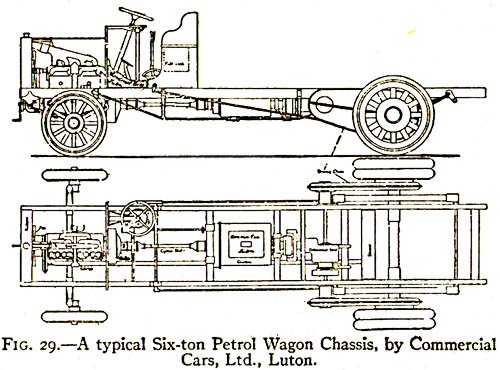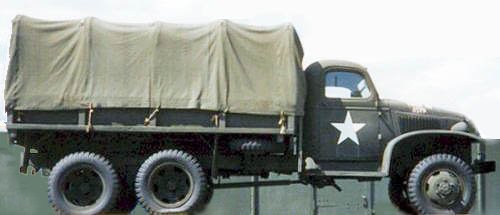About Trucks
Today, we look at trucks. The University of Houston's College of Engineering presents this series about the machines that make our civilization run, and the people whose ingenuity created them.
Here in Texas the word truck contains a vowel you'd normally use only if you spoke French. We call it a truck*. I've just been in another book-remainders bin where I found a beautiful coffee table book on trucks. What memories it brings back!
It begins by pointing out that automobiles entered our culture as toys for the rich. Trucks were quite another matter; they came into being for the economic and practical advantage they offered.
During the late 18th, and early 19th, centuries, steam promised to serve both pleasure-riding and drayage. But steam very soon moved off the roads and on to rails. There it hauled goods and passengers alike, from station to station.
The earliest trucks, if we can call them that, were steam-driven. Around 1770, a Belgian mechanic built two clumsy steam-powered vehicles. They did about two miles-an-hour and hauled five tons for a short distance. All the first horseless carriages, built large enough to hold their huge engines, would better be called, buses, omnibuses or drays -- forebears of our trucks.
But cars and trucks parted company after Carl Benz built a practical IC-engine-powered automobile in 1885. The pleasure vehicle was now coming into focus. From then until WW-I, practical motor-powered carriers would have to laboriously carve out their own niche in the world of commerce.
I was a toddler in the early 1930s when the truck finally finished claiming ascendancy. One of my earliest memories is playing with my large yellow toy dump truck -- modeled on a Mack truck. Jack Mack had first built carriages. He'd made the jump to IC-engine-powered trucks after he and his brothers set up their own business in 1893. My toy was probably inspired by the same Mack dump trucks that'd helped build Boulder Dam. In the early '30s, an occasional horse-drawn wagon still moved goods in the city. But they were now hold-outs in a generally truck-served world.
Yet, few of us have ever driven a truck. That experience seems reserved for only a few. I had my brief shot at it in the army where I qualified to drive the famous GMC 2-1/2-ton truck, That's the one you see in every WW-II movie -- the big 10-wheeler with a canvas covered truck-bed behind the cab. Handling its five-speed manual shift was an athletic feat.
Today, truckers will tell you, "If you bought it, a truck brought it." Big trucks (pardon me, trucks*) surround us -- all the way up to the Komatsu 930E dump truck with its 315-ton payload. Mack still makes trucks, and today's big 18-wheelers typically haul twenty tons of goods. They have automatic transmissions with more speeds than a fancy bicycle, and they're aerodynamically optimized.
So, my hat's off to the few of my listeners who drive those great beasts. The rest of us generally see the country cousin of our automobile as somewhat other-worldly -- and their drivers as mysterious as alchemists.
I'm John Lienhard, at the University of Houston, where we're interested in the way inventive minds work.
I. Phaneuf and J. Menzies, Trucks of the World: Over 240 of the World's Greatest Trucks. (Bath, UK: Parragon Publishing, 2006)
*I am grateful to librarian/linguist Jeff Fadell for pointing out to me that the regional pronunciation of the vowel, u, in the word truck is given the symbol ø in the international phonetic alphabet. It is the same as the vowel in the French word peu, meaning little.
The brief audio outro is from Dave Dudley's Six Days on the Road, 20th Century Masters, The Millennium Collection The Best of Dave Dudley. 2002 Mercury Records.

From the 1911 Encyclopaedia Britannica.

The GMC CCKW 2-1/2 ton truck, called a Jimmy (Fort Eustis)